Food Contamination Resources
Food poisoning means more than just “losing” your lunch. It also means that American businesses lose more than $77 billion annually because of foodborne illness, according to the Journal of Food Protection.
What makes up the $77 billion plus loss? Foodborne illnesses adds to medical costs, productivity losses, and sickness induced death. In short, individual suffering and related expenses, not to mention the recall costs, litigation costs, and the loss of consumer confidence. Does this information surprise you as an employee of a restaurant? If it does, it so much more important that you educate yourself on the dangers involved in the preparation of foods and your responsibilities to protect the public, your business and yourself.
EPRMA, in association with Control Risks, provides current information regarding safe food handling and what to do when an accident occurs in links below:


My Life-Threatening Bout With E. Coli Food PoisoningIn a harrowing piece from The New York Times, Maggie Menditto details her suffering from E. Coli food poisoning:
“Doctors don’t know for sure how I became infected with E. coli — at the time, last October, the outbreak tied to romaine lettuce was still several months in the future — but we do have some clues. I’m a vegetarian, so we know it didn’t come from eating meat. Although none of my family members got sick, my father also tested positive for E. coli. The only food we remembered sharing was a batch of arugula from a local farmers’ market about five days before I became ill, making it the most likely culprit.
The antibiotics were immediately stopped, as they have been linked to an increased likelihood of developing dangerous complications from the bacterial infection. But by then the signs were already beginning to show. My platelet count was dropping at a dangerous rate, my kidney function had begun to falter. I had developed hemolytic uremic syndrome, a life-threatening complication of E. coli infection.”
Restaurant Screens Covered with Creepy CrawliesWashing hands saves lives. Many hands are sharing tools, devices, surfaces and germs in restaurants, and germs can spread fast through contact with these items.Increasingly, restaurants and other food service organizations are relying on mobile technologies, such as POS systems, tablet menus, and remote card payment machines. Mobile devices are also being used to manage food prep and safety in accordance with inspection regulations.While these devices offer multiple benefits – increased efficiency, accuracy, etc. – they may also carry some risk. Think about it: everyone involved in the experience of dining out runs the risk of sharing screens and, therefore, sharing germs. Screens constantly get shared between employees – and customers – during shifts.How dirty do screens get? Scientists have found that the average cell phone is 10 times dirtier than a toilet seat. Major pathogens, like Streptococcus, MRSA, and E. Coli have routinely been found on electronic screens. Passing these dirty devices around spreads the germs and bacteria to hands – and then, potentially, to other surfaces.“Research says your phone is covered in germs: 25,107 bacteria per square inch to be exact. That makes your cell phone one of the filthiest objects you touch,” explained Francine L. Shaw, food safety e
 xpert and president of Savvy Food Safety Inc.“With advances in technology, cell phones are consistently being utilized to execute food safety strategies throughout the food service industry. This is especially true for the leaders in the industry that have implemented this advanced technology to enhance their company’s food safety culture.”So, how can restaurants successfully keep its screens germ-free?Click HERE to read three steps you can take….
xpert and president of Savvy Food Safety Inc.“With advances in technology, cell phones are consistently being utilized to execute food safety strategies throughout the food service industry. This is especially true for the leaders in the industry that have implemented this advanced technology to enhance their company’s food safety culture.”So, how can restaurants successfully keep its screens germ-free?Click HERE to read three steps you can take….Why It Is A Bad Idea To Poison Your CustomersFood Safety News recently published a piece giving free advice to food company CEOs during a Listeria Outbreak from Enterprise CEO, Lawrence MacDougall:”Imagine that the phone call comes or an email pops into your inbox – “Sir, we have been contacted by the health authorities and they say our product (polony) has been linked to illnesses and deaths. What do we do?”
 So, what do you do? Lawrence MacDougall received that call. Now, what has he done and what will he do?After being involved in every major (and a few minor) food poisoning outbreaks since the Jack in the Box E. coli Outbreak of 1993, I have seen it all. I have seen good CEOs act badly and make their and their company’s problems worse and I have seen bad CEOs handle the outbreak with such aplomb that they become associated with both food safety and good PR.So, what do you do?Of course, it is always best to avoid the outbreak to begin with. When I have spoken to CEOs or their Boards – generally, pre-outbreak and pre-lawsuit – I always pitch them on “why it is a bad idea to poison your customers.” Putting safe food as the primary goal–yes, alas, even before profits–will (absent an error) give you a very, very good chance of never seeing me on the other side of a courtroom.But, what if despite your best efforts, or what if you simply did not care, and an outbreak happens.So, what do you do?Read Lawrence MacDougall’s 7 excellent pieces of advice by clicking HERE
So, what do you do? Lawrence MacDougall received that call. Now, what has he done and what will he do?After being involved in every major (and a few minor) food poisoning outbreaks since the Jack in the Box E. coli Outbreak of 1993, I have seen it all. I have seen good CEOs act badly and make their and their company’s problems worse and I have seen bad CEOs handle the outbreak with such aplomb that they become associated with both food safety and good PR.So, what do you do?Of course, it is always best to avoid the outbreak to begin with. When I have spoken to CEOs or their Boards – generally, pre-outbreak and pre-lawsuit – I always pitch them on “why it is a bad idea to poison your customers.” Putting safe food as the primary goal–yes, alas, even before profits–will (absent an error) give you a very, very good chance of never seeing me on the other side of a courtroom.But, what if despite your best efforts, or what if you simply did not care, and an outbreak happens.So, what do you do?Read Lawrence MacDougall’s 7 excellent pieces of advice by clicking HERE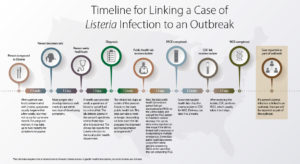
University of Florida updates recall manual for food businessesThe Food Science and Human Nutrition Department of the University of Florida has assembled a manual to assist food businesses, at all points in the food chain, in learning to conduct rapid and effective product recalls. Link to manual at http://edis.ifas.ufl.edu/fs108The manual was developed to help businesses with the process and is based on information provided by important food recall and safety resources.The mandatory food recall authority of the Food and Drug Administration went into effect when the Food Safety Modernization Act (FSMA), was signed into law in January 2011. No one in the food industry likes to think about product recalls, but they are necessary to protect both public health and a company or brand reputation, the food recall manual says. The number and scope of food recalls is increasing as regulatory agencies implement new tools including whole-genome sequencing of microorganisms, which permits linking illnesses to a specific food with a whole new level of sensitivity and accuracy, according to the manual.Under the FSMA, plans for product recalls are mandated for operations that manufacture, process, and pack or hold foods; in short, any food operation that must register with the FDA. Under FSMA there are some exempted operations, such as small farms. However, under its broad authorities to protect the public health, recalls can affect even exempted operations should FDA conclude that a threat to public health exists. FSMA also gives the FDA a new authority — the ability to order a product recall.The food recall manual offers a guide to what actions a food business should take. For example, if a regulatory agency believes a product is causing an illness, the producer should assemble its recall team and ask if recall is recommended.If there is a news media story on a possible problem with a food, if internal quality control staff or a customer log suggests a problem or if a local health department believes a product is making people sick, the producer should assemble its recall team, review internal records, engage a crisis communication professional and contact the appropriate regulatory agency.
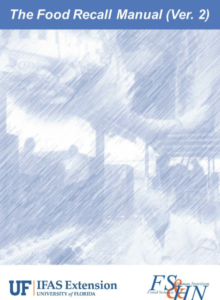 Get a PDF of the 2018 Food Recall Manual by clicking here: Food Recall Manual 2018
Get a PDF of the 2018 Food Recall Manual by clicking here: Food Recall Manual 2018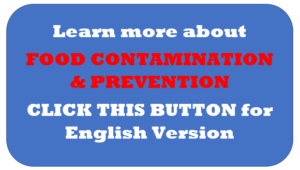
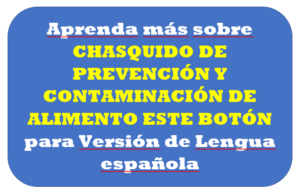
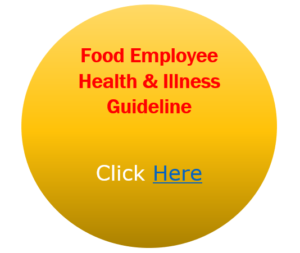
Did you know?
…that each year roughly one out of six Americans (that’s 48 million people) get sick, 128,000 are hospitalized, and 3,000 die from foodborne diseases.
Did you know?
…that reducing foodborne illness by just 1 percent would keep about 500,000 Americans from getting sick each year. Reducing foodborne illness by 10 percent would keep about 5 million from getting sick.
Did you know?
…that leftovers should be stored in airtight shallow containers (two inches or less) for rapid cooling and to prevent the spread of bacteria. The time it takes for food in a large container to cool can be long enough for bacteria to grow. Never allow leftovers to cool to room temperature before refrigerating them.
Did you know?
…a large percentage of food poisoning cases could be eliminated if people washed their hands more often when preparing and handling food.
Did you know?
…that recent studies show there’s no real benefit to washing meat and poultry. In fact, if you think you’re removing bacteria from meat and poultry by washing it, you actually might be allowing germs to spread to other ready-to-eat foods and causing cross-contamination in the process. The way to kill bacteria is to cook all meat, poultry and seafood to proper temperatures. And remember to use a meat thermometer to check if your meat is done!
Did you know?
…that the same pathogens that cause food poisoning can cause arthritis, kidney failure, meningitis and Guillain-Barré syndrome. The Food and Drug Administration estimates that about two to three percent of all food poisoning cases lead to secondary long-term illness such as these.

